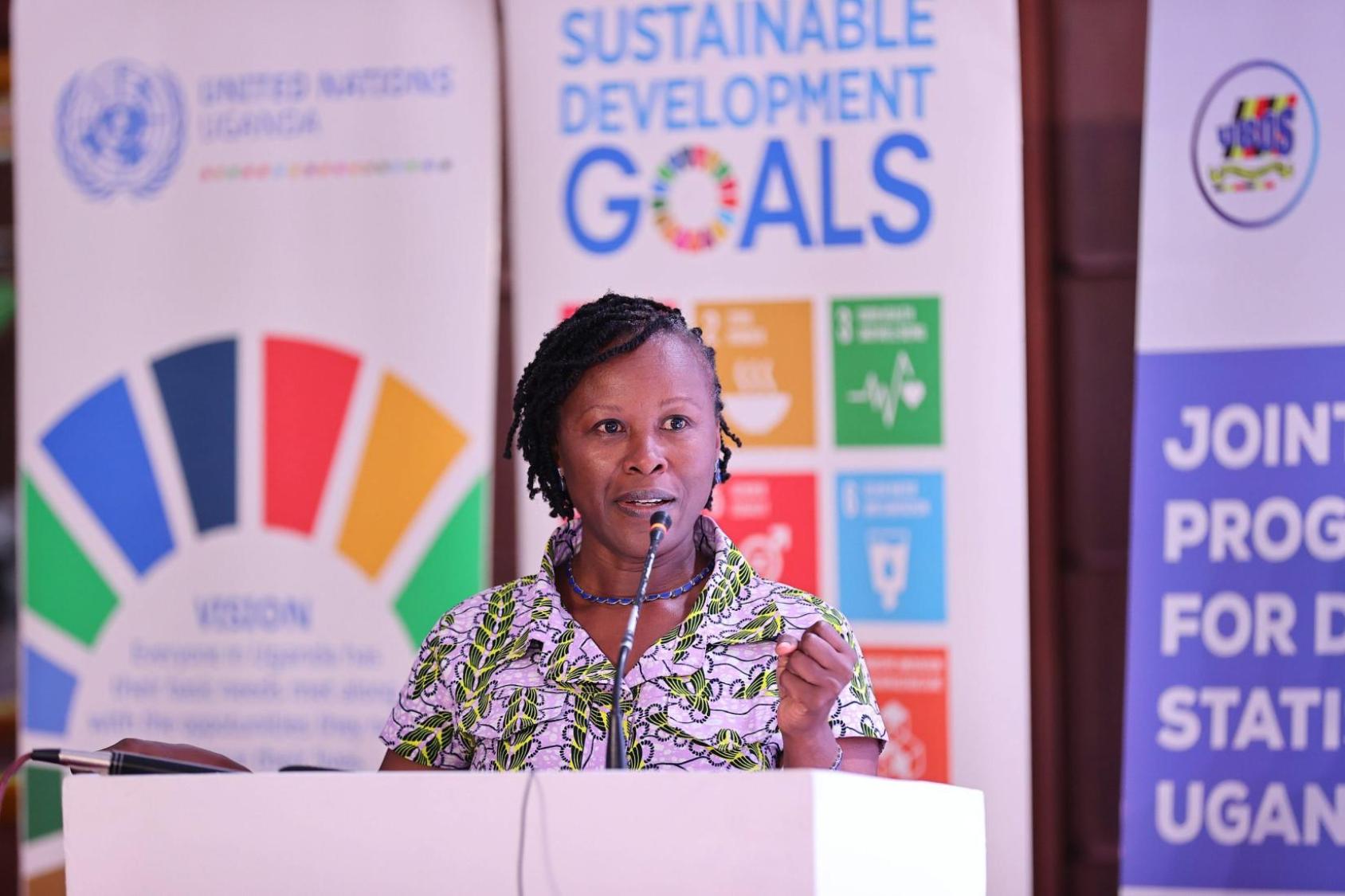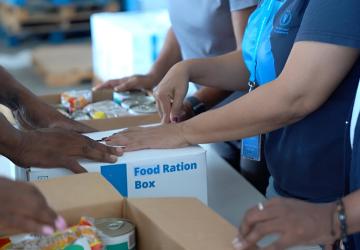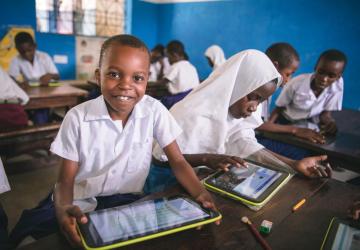Crunching the Numbers: SDG Data Monitoring and Reporting Across the World

Data is indispensable —to name what we want to achieve and to measure how far we have come. With just about six years to go for our 2030 milestone, the world is severely off-track to realize the Sustainable Development Goals (SDGs). Even as we race to make the most impactful decisions for a sustainable future, data and evidence continue to be our backbone, informing policies, investments and spurring us to improve our effectiveness.
The journey to making data accessible and usable for the SDGs has been a significant one. In 2016, when the global indicator framework was first established, reliable data was available for only about a third of the indicators, and many lacked established methods for collection. Today, the number of indicators with good data coverage (meaning data is available for more than 50 per cent of countries) has nearly doubled to 68 per cent. Furthermore, since 2020, all 231 indicators now have internationally accepted methodologies.
Yet, this exercise of collecting, monitoring and reporting SDG data is a titanic effort, which extends beyond just the statistical bodies in every country. It requires a collaborative partnership among governments, international organizations, data producers and users.
UN Resident Coordinators (RC), at the helm of UN Country Teams (UNCT), can act as reliable connectors and convenors, bringing together the right stakeholders, expertise and resources to help build consensus and strengthen mechanisms for SDG monitoring in a timely manner.
Here are three countries where, through the Resident Coordinator’s Office (RCO), the UN is providing strategic and cohesive support to countries measuring their progress towards the SDGs.

Serbia
Since 2016, the RCO has been collaborating closely with the country’s Statistical Office to establish a robust SDG monitoring framework. This framework ensures the delivery of high-quality, disaggregated, and reliable data crucial for monitoring and reporting on the SDGs.
Through fruitful partnerships with various government stakeholders, the UNCT in Serbia facilitated the mapping of SDG data sources and the implementation of data sharing protocols that the Statistical Office relies on, to share information with line ministries. Further, government agencies such as the Environmental Protection Agency and the Institute for Public Health are now more incentivized to share data with the Statistical Office.
This collaborative effort has significantly enhanced Serbia's SDG Dashboard, providing relevant statistics through platforms like the SDG Indicators (Serbia). The platform, set up with the support of the European Union, is making data collection more sophisticated, ensuring they are easily available to the public too. As a result, the database of available SDG indicators has seen remarkable growth, surging from 44 (18 per cent) indicators available in 2017 to over 145 (58 per cent) today. With this data now readily available, Serbia is able to issue quality SDG Annual Results Reports.
“Tracking progress on the SDGs will be key in the coming years, as it will highlight where societies will need to focus their efforts,” notes UN Resident Coordinator Matilde Mordt. “Our collaboration with the Statistical Office, and the German and Swiss cooperation agencies, has strengthened Serbia's SDG monitoring framework, ensuring high-quality and disaggregated data. The significant increase in available SDG indicators, that has more than tripled since 2017, is proof of our joint efforts. We remain committed to making this information accessible to decision makers and the public, to promote sustainable development and work towards achieving Agenda 2030.”
Looking ahead, the RCO and UNCT are working with partners to ensure SDG progress reports are accessible to journalists and lay users.
Uganda
Earlier this year, the Government of Uganda and the UN launched the Joint Programme for Data and Statistics, a US$ 41 million initiative implemented by the Uganda Bureau of Statistics. This programme brings together 12 UN entities in Uganda to significantly enhance the collection and utilisation of data and statistics related to the SDGs.
The programme is aligned with the national development plans and frameworks. It aims at improving the capacity of the National Statistical System to produce, disseminate and use data and statistics.
While launching the joint programme, First Deputy Prime Minister, Rt. Hon. Rebecca Kadaga, speaking on behalf of the Prime Minister noted that, “As a country, we are at that critical take-off stage where we must continuously and simultaneously plan ahead, reflect on progress and evaluate the best way forward to achieve sustainable social and economic development across all sectors.”
Uganda’s data ecosystem faces several persistent challenges, including inadequate financial and human resources for data collection and analysis, a lack of baseline information for indicators, the slow pace of data production from various sources, and limited capacity to compile new indicators and harness data from non-traditional sources. The joint programme on data and statistics aims to build the capacities of the national statistical system to address these gaps.
UN Resident Coordinator in Uganda, Susan Namondo praised this new collaborative approach, stating, “Several UN agencies were supporting the Government on data and statistics, but this was in a fragmented way, leaving many synergies untapped. The new approach will build upon the good work already being done."

Montenegro
In Montenegro, under the leadership of the RCO, the UN supports the national SDG dashboard, that helps track progress on the implementation of the SDGs Since its establishment towards the end of 2022, the availability of SDG indicators considerably increased from below 30 per cent to current 63 per cent, with significant progress in measuring SDG 7 (Affordable and clean energy), SDG 9 (Industry, innovation and Infrastructure), closely followed by SDG 4 (Quality education) and 6 (Clean water and sanitation). The increase in public availability of collected indicators was also evident through the improved SDG index score (as per the Sustainable Development Report) from 68.8 in 2022 to 73.05 in 2024.
Key indicators from this dashboard are also used to report on the National Sustainable Development Strategy and are integrated into the Action Plan for the implementation of National Commitments delivered by the President at the SDG Summit 2023. This SDG monitoring is being institutionalized through the national Sustainable Development Office, with the RCO-led and specific agencies' consultancy and technical assistance. The initial establishment of the dashboard was supported by United Nations Economic Commission for Europe (UNECE), while the inter-agency Monitoring, Evaluation, and Learning (MEL) group coordinates further work to enhance dashboard functioning and longer-term sustainability.
The dashboard has also evolved into a crucial platform for knowledge exchange, featuring publications and offering access to analytical work by the UN that aligns with the strategic priorities of the UN Sustainable Development Cooperation Framework, thus further ensuring buy-in and more in-depth engagement of Government partners.
To read more about the UN’s work in these countries visit serbia.un.org, uganda.un.org and montenegro.un.org.











